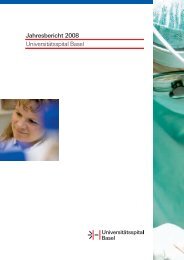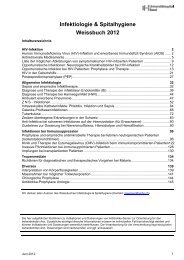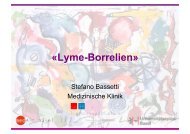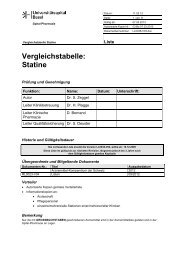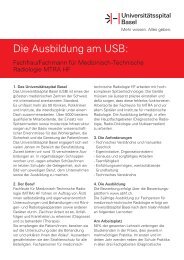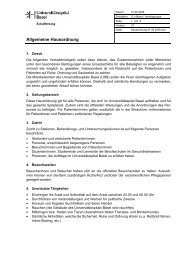Transmucosal Nasal Drug Delivery: Systemic Bioavailability of ...
Transmucosal Nasal Drug Delivery: Systemic Bioavailability of ...
Transmucosal Nasal Drug Delivery: Systemic Bioavailability of ...
Create successful ePaper yourself
Turn your PDF publications into a flip-book with our unique Google optimized e-Paper software.
2. Impact <strong>of</strong> anatomy and physiology on transmucosal nasal drug delivery<br />
2.2 <strong>Nasal</strong> mucosa and mucociliary clearance<br />
2.2.1 Morphology <strong>of</strong> the nasal mucosa<br />
All mucous membranes are linings <strong>of</strong> ectodermic origin and are involved in absorption and<br />
secretion processes. Mucous membranes cover various body cavities exposed to internal organs<br />
or external environment. At the nostrils, the lips, the ears, the genital area, and the anus, tissue<br />
changes in a smooth transition from skin (epidermis, dermis) to mucosa.<br />
From the nostrils to the nasopharynx, the predominant cell types <strong>of</strong> the nasal mucosa lining are<br />
changing. Stratified squamous, respiratory (pseudostratified columnar), and transitional epithelium,<br />
are the different epithelia linings <strong>of</strong> the nasal mucosa. In the anterior third <strong>of</strong> the nasal cavity,<br />
stratified squamous and transitional epithelium precedes respiratory epithelium, which is<br />
predominant in the posterior two-thirds <strong>of</strong> the cavity.<br />
The human olfactory region, situated in the superior conchae, covers only about 10% (about<br />
10 cm 2 ) <strong>of</strong> the nasal cavity, while in mice and rats about 50% <strong>of</strong> the nasal cavity is covered by<br />
olfactory epithelium [Gizurarson 1993]. The olfactory epithelium is a pseudo stratified columnar<br />
structure. It consists <strong>of</strong> specialized olfactory cells, supporting cells, and serous and mucosal glands<br />
[Romeo, et al. 1998].<br />
The respiratory epithelium is the major lining <strong>of</strong> the human nasal cavity and is essential for cleaning<br />
<strong>of</strong> nasal mucosa by the mucociliary clearance. The respiratory epithelium comprises <strong>of</strong> five cell<br />
types; ciliated and non-ciliated columnar cells, goblet cells, basal cells, and low numbers <strong>of</strong><br />
neurosecretory cells in the basement membrane, see Figure 2-2. The apical side <strong>of</strong> the columnar<br />
and goblet cells reaches the lumen <strong>of</strong> the nasal cavity. Approximately 20% <strong>of</strong> the cells in the lower<br />
turbinante area are ciliated cells, with about 100-300 cilia on the apical surface. Cilia are hair-like<br />
projections (5-10 µm) on the apical surface <strong>of</strong> the columnar cells. All cilia beat in a coordinated<br />
fashion, transporting the mucus towards the nasopharynx.<br />
Basal cells are adjacent to the basal lamina, on the basolateral side <strong>of</strong> the epithelium. The lamina<br />
propria is located beneath the basal lamina and contains many blood vessels, nerves and glands.<br />
The functions <strong>of</strong> epithelial cells in the nose can be summarized as follows: (1) building a physical<br />
barrier for particles and allergens; (2) secretion <strong>of</strong> mucus, to protect the mucosa and to provide<br />
efficient conditioning <strong>of</strong> the inspired air; and (3) responding to various stimuli by producing<br />
mediators to recruit lymphocytes, eosinophils, and mast cells to the nasal mucosa [Takeuchi et al.,<br />
2006].<br />
The intense blood flow in the arteriovenous anastomosis and the large surface <strong>of</strong> the respiratory<br />
epithelium favors transmucosal nasal drugs absorption. <strong>Drug</strong> absorption in the olfactory region is<br />
possibly resulting in direct nose to brain-transport through the nervus olfactorius (q.v. chapter 1.4.)<br />
[Gizurarson 1993].<br />
Katja Suter-Zimmermann Page 18 <strong>of</strong> 188 University <strong>of</strong> Basel, 2008




